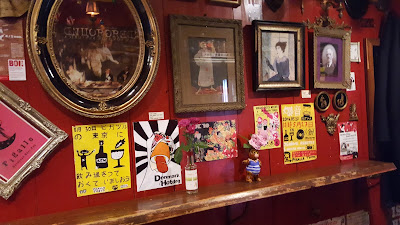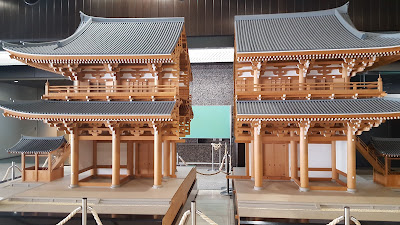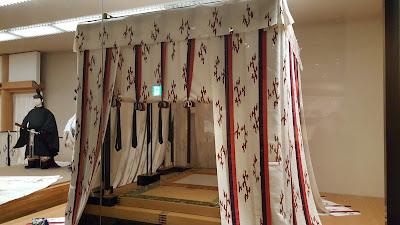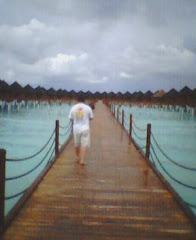Our final weekend in Tokyo led us to the National Museum of Japanese History. It seemed like a fun thing to do before moving on to colder pastures.
東京最終の週末は友達と国立歴史民俗博物館まで行ってきました。朝から出発。
Sort of a tight fit in the car.
車が6人にとってちょっと狭かった。
And here we are at the National Museum of Japanese History.
国立歴史民俗博物館に到着。
We got here a little before noon. We would check out the museum and also have lunch here as well.
あとちょっとで昼になる頃だった。博物館を探検してあと、ミュージアムのレストランでランチを食べることにした。
The museum is located in Chiba Prefecture in a town called Sakura. It is commonly known as the "Reki Haku". According to Wikipedia, the museum was founded in 1981 as an inter-university research consortium and was opened to the public in 1983.
日本のウィキペディアによると国立歴史民俗博物館(通称 歴博)は千葉県佐倉市城内町にある大学共同利用期間法人人間文化研究機構が運営する博物館。日本の古学、歴史、民俗について総合的に研究・展示する博物館である。
At the entrance before we even started to see the displays, we checked out the large model replicas of some temples at the entrance. This is a model of the Taho Pagoda of Negorodera Temple in Wakayama Prefecture.
博物館の中の展示品を見るまえに入口で大きな模型が展示されてるものを見ました。これは和歌山県にある根来寺多宝塔模型。
The pictures above are models of the main gate of Tofukuji Temple in Kyoto.
上記にある写真は京都の東福寺三文模型。
Shinden-zukuri, the architectural style adapted from the layout of the Imperial Palace.
東三条殿(ひがしさんじょうどの)
This is called a michodai. It is a bed used by the emperor, queen, regent, etc.
貴族の生活にあった御帳台(みちょうだい)。天皇や貴族が寝るときに寒さや人目を防ぐために用いた組み立て式の寝室。
This is a model of the interior of an aristocratic mansion.
寝殿の室内。
Everyday garment worn by nobles.
中世武士の水干姿。
Representative Warrior Residence of Eastern Japan : 13th-14th century.
武士の館。
The Asakura's residence in Echizen Province (now Fukui).
朝倉館復元模型。(16世紀)
I just love all these models. I could have spent all day just looking at the details but there was still quite a bit to explore.
この模型が凄い好き。ずーと見られる感じ。でもまだまだ見るところがいっぱいあるので、前に進むしかない。
Display of old weapons. I know one of my friends in the U.S. would enjoy this section of the museum. He might not want to leave this area.
昔の武器の展示。アメリカの友達の一人は絶対この部屋から出なくなるくらい興味を持ちそう。
If I remember correctly, these armors were called yoroi.
自分の記録が確かならば、これは鎧というものです。
This was the start of a market street event in our old neighborhood of Setagaya. It apparently started in 1578 and continues to this day.
おう、私たちが近くに住んでた世田谷のボロ市の始まりだ。大正6年(1578ねん)から始まって、今でも続いてます。
Housou Jizo / 疱瘡地蔵
Dutch ship calling on Japanese ports in the mid 17th century.
17世紀中頃、オランダの船の模型。
Feudal Japan farmer's clothes.
中世農民衣装。
Seller of decoction products which is the action or process of extracting the essence of something. Yes, I had to look up the workd "detoction"!
煎じ物売り。
Feudal Japan merchant.
中世商人。
Old Japanese currency / 日本の古い通貨
Women such as these were called katsurame that sold sweetfish to people in Feudal Japan.
桂女(かつらめ)は中世に町の川でとられた鮎を販売してた女性です。
Feudal Japanese carpenters.
中世の大工さんたちですね。
The item the person in front is holding is called a binnzara, which is a musical instrument which is used in folk songs, rural dances, and kabuki theater.
前に立てる人が手に持ってるのは日本の楽器の拍板(びんざさら)。
This is where I would be working if I lived in Feudal Japan - the bookstore!!
自分が中世の日本に住んでたら、ここで働いてる。もちろん本屋です!
The illustrated book shop was called an ezoshiya.
これは絵双紙屋(えぞうしや)というです。
Strange but cool art piece made with seashells.
貝殻から出来た面白いアート。
This was just bizarre! I didn't know what to make of it.
これは不思議過ぎて、作者はなにを伝えようとしてるのかな?
It appears like my friend Gan-chan has become part of the display.
あれ、友達の岩ちゃんが展示物になったかも。
Time slipping back to Edo.
江戸にタイムスリップ。
This is a water wheel. It was used to irrigate fields. However, it was powered by using your feet.
足踏式水車。水路から田に水を入れる道具。
Old Japanese mechanical doll.
からくり人形。
Our next stop will be into the Showa era. Our museum adventure will continue...
これからは昭和時代に入ります。博物館の探検は続きます。





























































































.jpg)


